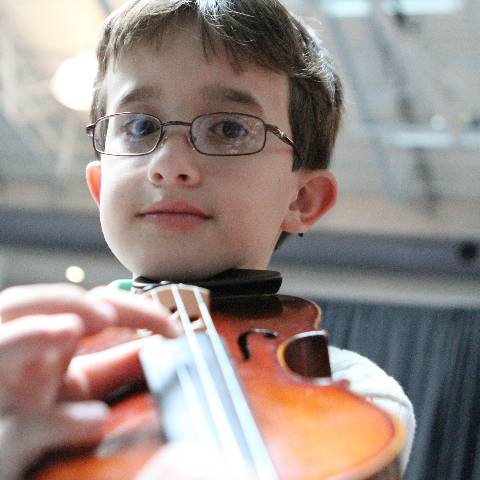

Have you ever walked by a string class full of little kids and it appeared to you that chaos reigned? There were kids plucking instruments, talking and laughing, trying out their bow holds for each other, fumbling with the “Rosin Wagon” trying to find the right method book to use.
The day’s assignment is on the board while the instructor makes her way through the crowded line of chairs, tapping the next student on the shoulder and taking their instrument in hand, tuning it and sharing a brief moment with each student so that they feel fully engaged. You may notice her make eye contact with the student as she plucks the strings, tunes, plucks again and then hands back their instrument. She checks their playing position and moves to the next student.
When all the instruments have been tuned and the teacher has had a short conversation with each student, she makes her way back to the front of the class and then claps her hands several times. That must be the signal to get quiet and pay attention, because the students stop their chatting and practicing and look up at the teacher.
You might think it’s a little crazy handing a bunch of third-graders musical instruments and then asking them to be quiet and pay attention. Maybe. But there is a lot going on in those growing little brains as they grapple with the physical challenges of an activity such as playing a string instrument. It requires intricate small motor movements that are not symmetrical in any way – the left hand is doing one thing and the right hand is doing something entirely different.
Additionally, they are learning to sync up their movements with a given beat, and THEN fit it into a recorded accompaniment. Deciphering the notes on a staff is like learning a new language. Students learn to read it and place it geographically on their instrument.Over time, they learn the teamwork necessary to play as an ensemble. Ultimately, they experience self expression on a level not found anywhere else but in music. To work for two or three months in class on a difficult piece and then perform it successfully sparks students’ sense of self-satisfaction we music teachers work all school year to help inspire.
There are 22 students in my third-grade string class of no less than four different instruments – violin, viola, cello and bass. That means there are two bow holds and three clefs in operation in the class – treble, alto and bass – so that each student is reading music in his or her own instrument’s “language.” So far this year, in seven months, we’ve learned to organize our work area with the right book and a pencil, pack and unpack our instrument safely, and sit and hold our instrument with proper form.
We’ve memorized the eight notes of the D major scale, and we can pluck 43 songs with accompaniment. We’ve learned several rhythms, including quarter notes and eighth notes and their equivalent rests. We’ve learned what the conductor is doing to show we are about to play, and how to start and stop together. Whew!
By the time the school year is over, we will have performed three times -- in the Christmas concert, Grand/Special Day, and Battle of the Bands (where we dress up in costume, pick our own song to choreograph and play on our instruments, and the master of ceremony tells jokes during set changes).
Currently, there is a large body of research to support just how good for the brain playing a musical instrument is, but learning a musical instrument in a classroom environment does not look like any other class. It can seem chaotic to someone who has never experienced beginning instrumental music instruction in a classroom setting.
To learn more about the unique benefits, visit the following links:
“This is your brain on a musical instrument” (USA Today)
"How playing an instrument benefits your brain" (TED Talk)
This article discusses the impact playing a musical instrument has on other abilities.
This article states that plaing a musical instrument is the brain's equivalent of the body's "full body workout."
This article discusses how music practice can protect the brain from mental decline due to age or disease.